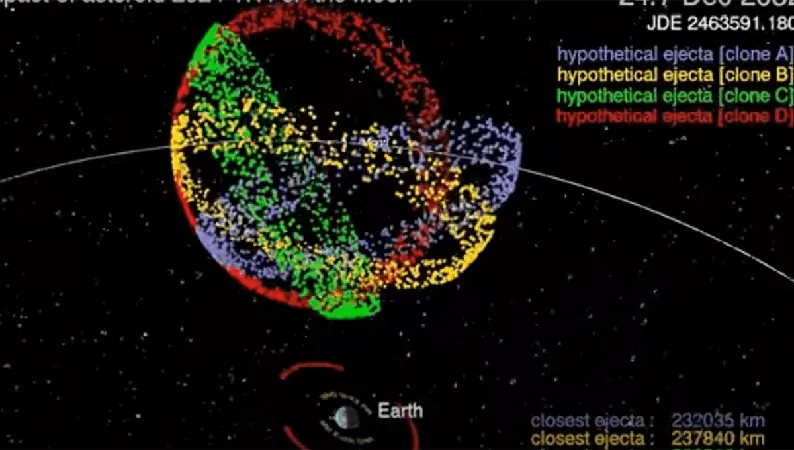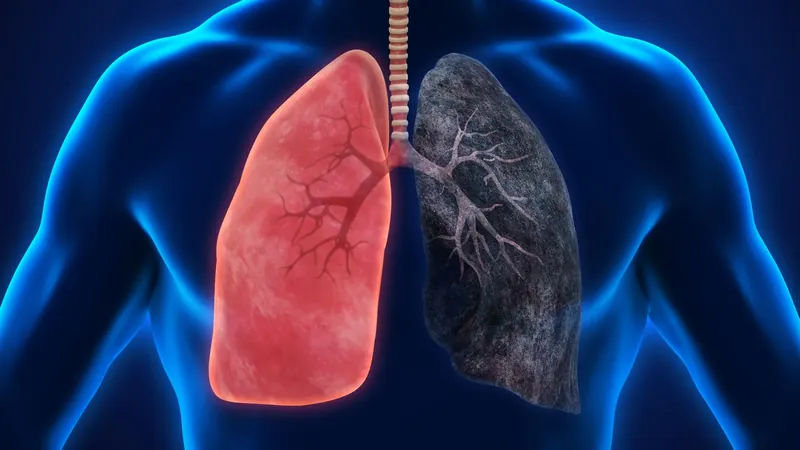
Revealing Ancient Secrets: AI and X-rays Uncover the Hidden Words of Charred Scrolls
2025-05-30
Author: Wei Ling
In the year 79 AD, the catastrophic eruption of Mount Vesuvius buried the Roman settlement of Herculaneum, entombing countless ancient writings in a tomb of ash and heat. For centuries, the charred remains of these scrolls were believed to be lost forever, their fragile state making any attempt to unroll them a recipe for disaster.
A Breakthrough in Technology
But a groundbreaking revelation has emerged thanks to advanced technological tools that promise to crack open these historical treasures.
Brent Seales, a pioneering figure from the University of Kentucky, has developed innovative software combining digital imaging and intricate analysis, unearthing content once deemed irretrievable.
Unearthing a Hidden Library
Experts have turned to powerful X-ray systems, which meticulously scan the brittle papyrus without any physical contact, allowing researchers to detect layers of compressed material.
Cutting-edge artificial intelligence plays a crucial role in this process, using sophisticated algorithms to differentiate between the carbon-based ink and the papyrus, despite their similar composition.
Leading the charge is Stephen Parsons, who directs an international competition aimed at deciphering these enigmatic scrolls.
"We’re confident we will be able to read pretty much the whole scroll in its entirety," Parsons asserts, expressing optimism that, with further training, these technologies can unveil lengthy passages long hidden from view.
The Art of Virtual Unwrapping
The idea of "virtual unwrapping" gained momentum with similar imaging techniques applied to the En-Gedi Scroll, an ancient Hebrew manuscript uncovered in the mid-20th century.
Researchers adeptly adapted these methods for Herculaneum’s fragile artifacts, which presents a unique challenge due to the indistinguishable nature of the ink and the papyrus.
By creating a detailed digital scan that maps the scrolls in 3D, specialists can identify individual layers. This allows them to visualize the elusive letters while preserving the integrity of the manuscripts, avoiding damage that could turn them to dust.
A Treasure Trove of Ideas
The fragments that have been deciphered so far suggest these scrolls might contain lost works from Epicurean philosophers, discussing ways to live well and pondering whether scarcity affects our enjoyment of life's simple pleasures.
This exciting discovery has ignited a flame of interest among scholars, eager to delve into the ancient perspectives on life and culture.
A Global Collaboration
Students from around the globe have surprisingly contributed to this scholarly endeavor, with winners of a coding competition training machine learning models to detect previously invisible words and phrases.
Seales credits this collaborative effort as a catalyst that transformed ambitious dreams of uncovering history into practical reality.
Why These Scrolls Matter
Scientists are optimistic that these innovative techniques could extend to other fragile texts, often referred to as the "invisible library." This encompasses countless manuscripts and documents, brimming with knowledge yet too delicate to be handled.
Future aspirations include scanning entire collections, further unlocking Herculaneum’s literary treasures and potentially revolutionizing our understanding of ancient life.
Deciphering more of these scrolls could enhance our comprehension of classical literature and philosophy, shedding light on how past generations grappled with moral questions and daily realities.
AI: The Key to the Past
With a heightened focus on high-resolution imaging and AI, researchers are poised to refine their methods for creating and interpreting 3D models of ancient documents.
Their enthusiasm is palpable, as they remain hopeful for continual breakthroughs in revealing texts once thought to be lost to time.
"We can see that the entire scroll is filled with text," Parsons invites, urging innovative minds to join in the quest for these concealed narratives.
A Bridge to Humanity
This effort is more than an academic pursuit; it is a connection to our shared humanity. The scrolls, crafted millennia ago, grant us a rare glimpse into ancient thoughts, feeding our innate curiosity to preserve and understand voices from the distant past.
The Role of AI in Cultural Heritage
The success of deciphering the Herculaneum scrolls has encouraged a reevaluation of how AI can assist in studying our cultural heritage.
Far from replacing human scholars, AI stands as a supportive tool, uncovering patterns and details undetectable by the human eye, with implications for various fields, including epigraphy and paleography.
As algorithms continue to evolve, experts anticipate AI's role in decoding faded or incomplete texts from archaeological sites worldwide.
This ongoing study paves the way for a future where the whispers of antiquity can be heard once more.



 Brasil (PT)
Brasil (PT)
 Canada (EN)
Canada (EN)
 Chile (ES)
Chile (ES)
 Česko (CS)
Česko (CS)
 대한민국 (KO)
대한민국 (KO)
 España (ES)
España (ES)
 France (FR)
France (FR)
 Hong Kong (EN)
Hong Kong (EN)
 Italia (IT)
Italia (IT)
 日本 (JA)
日本 (JA)
 Magyarország (HU)
Magyarország (HU)
 Norge (NO)
Norge (NO)
 Polska (PL)
Polska (PL)
 Schweiz (DE)
Schweiz (DE)
 Singapore (EN)
Singapore (EN)
 Sverige (SV)
Sverige (SV)
 Suomi (FI)
Suomi (FI)
 Türkiye (TR)
Türkiye (TR)
 الإمارات العربية المتحدة (AR)
الإمارات العربية المتحدة (AR)